| The Leica Digilux 2x2 experiment
We've talked about it from time to time. Is there a difference between the Digilux 2 cameras in terms of sensor or other? Well, one Sunday I stitched two Leica Digilux 2 cameras together, upside down, and went out to shoot them simultaneously to find out.
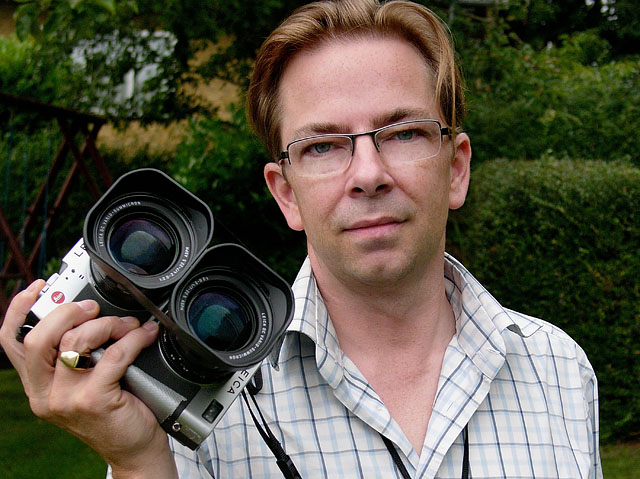
It reminds of the 1960'ies two-eyed cameras and is actually a quite compact and light weight setup. And it doesn't take that long before you get into the habit of adjusting two cameas and shoot them the same time. I just mention it as an interesting observation, beacuse frankly, I can't think of any reason to use two cameras simultaneously.
Camera B [serial 3014486] is the top camera on the picture. It's newly serviced at Leica but probably has to go back as the AF has some trouble finding focus when on 70mm zoom. The sensor was replaced long time ago.
Camera A [serial 2987278] is the bottom camera on the picture and is also newly serviced at Leica and had the sensor replaced.
I shot using the camaeras lightmeter, as well as by manual and use of external lightmeter. Whitebalance I decieded to try on AUTO although I almost always do manual whote balance by using a white piece of something, or a WhiBal (grey) card.
Same detail level, different results from AUTO white balance
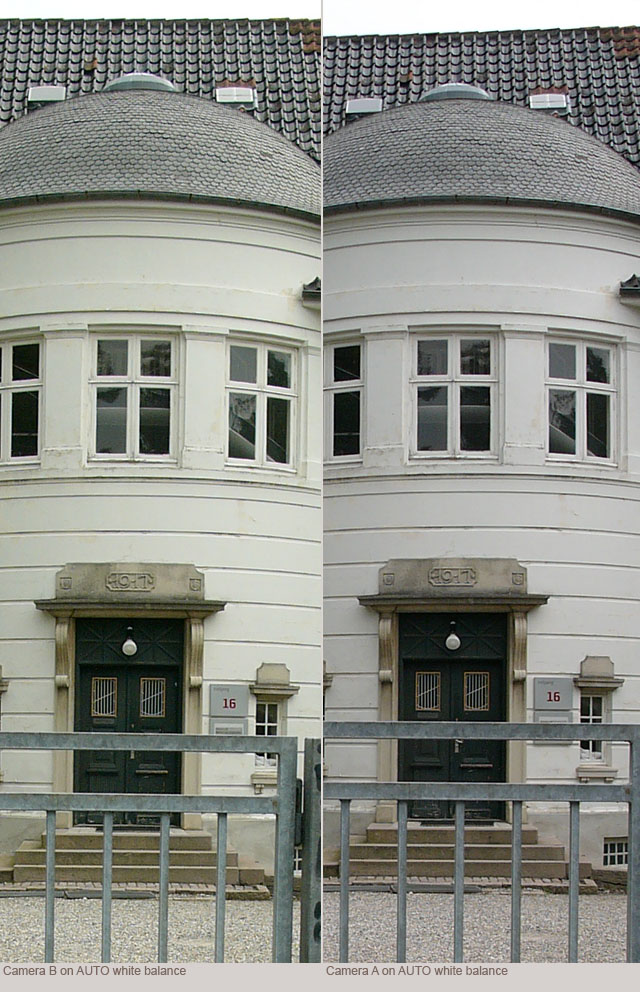
Here's both camreas set to f/2.8 and 1/1000 manual exposure, but the white balance is AUTO and the cameras get diferent results. Bot EXIF files say "daylight" in the white balance and I have no actual idea if the Diglux 2 adjusts white balance to any other than daylight, tungsten, etc (instead of finer adjustment to levels in between).
Here's the full files of the two above:
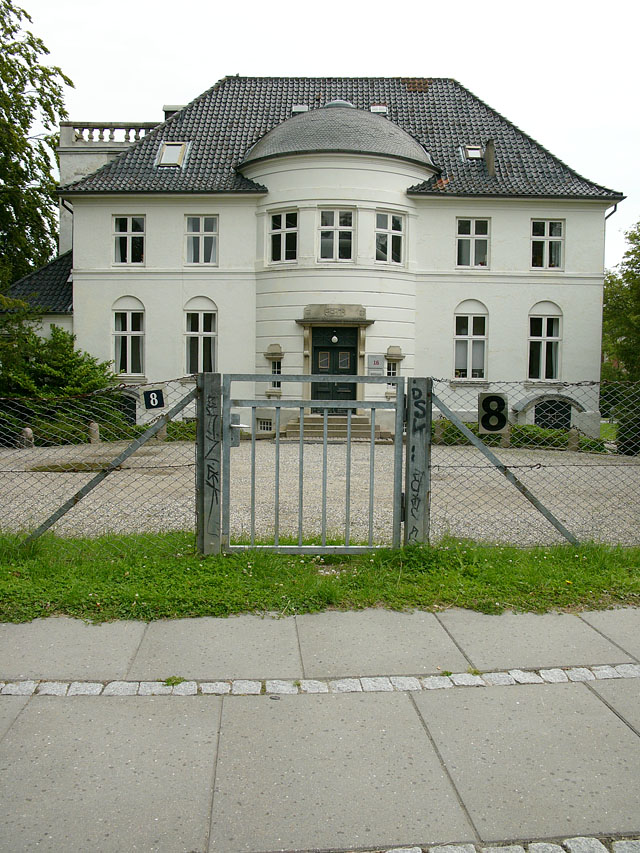
Camera B
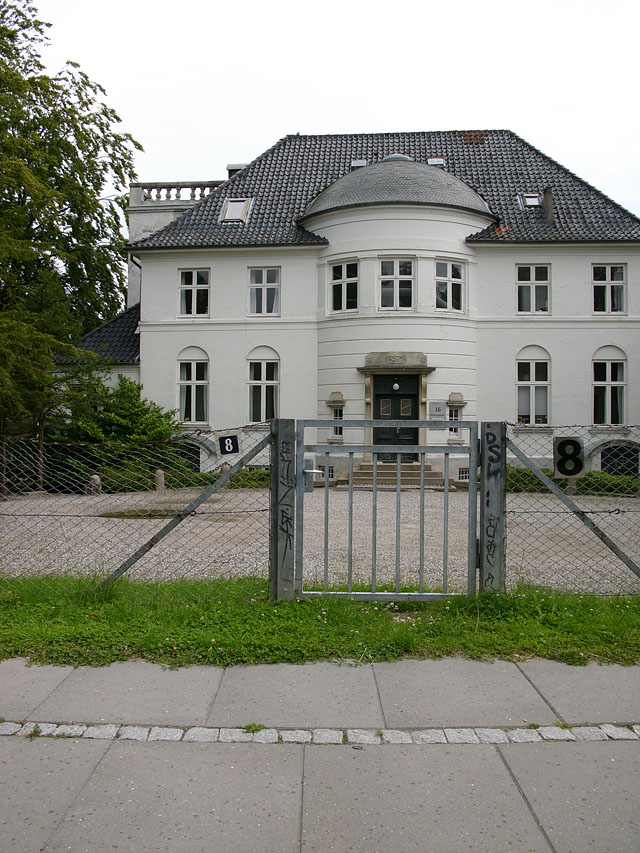
Camera A
White balance can of couse be adjusted in Lightroom 2 or Aperture if one wants to. Thought I always shoot Digilux 2 as JPG-files, I most often send them through Lightroom 2 for cropping and adjustments in exposure and white balance(just note that the quality of Digilux 2 JPG-files suffer a bit when sent through Lightroom 2. The best results are obtained with going directly to Photoshop).
But also exposure or sensitivity differs
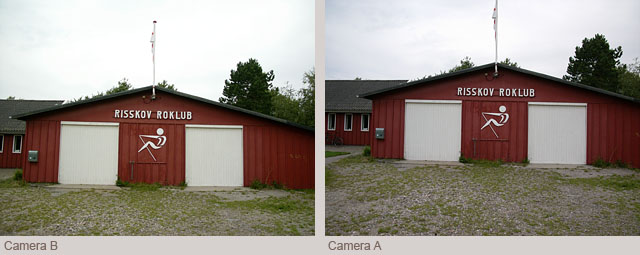
Here's Camera A left and Camera B right. As can be clearly seen, apart from the difference in color temperature (white balance), the Camera B has a darker exposure. But both cameras was set to 1/1000, f/2.5 at 100 ISO. Big question then is; which do you like the best?
Auto shutter-priority exposure is different
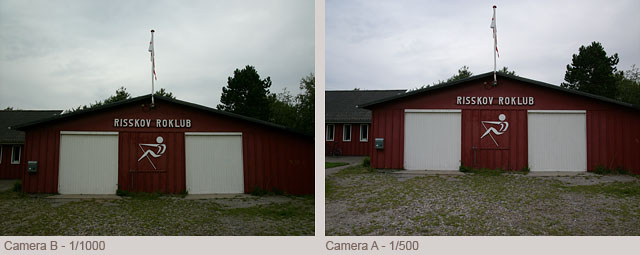
Now, also when the camera is set to f/4.0 and the shutter-(priority) is set to AUTO, they cameras get it different. the Camera B goes by 1/1000 whereas the Camera A goes by 1/500. That's actually one stop in difference, and I guess Camera A got it most right. The Bamera B has more sky in the frame, and that could be it's excuse?!
Less notable exposure difference when in daylight?
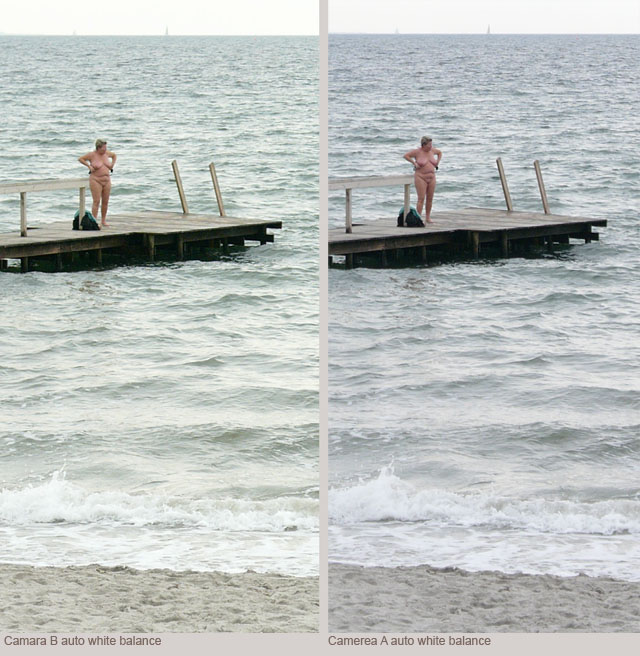
Not really sure what point I'm trying to make with this one (which is a 10% crop of the original file). It's both manual exposure 1/1000 f/2.5 100 ISO, and the white balance is set to auto. I feel I sense a very small difference in exposure, but less notable than in the darker toned picuture above.

Same detail level, isn't it? 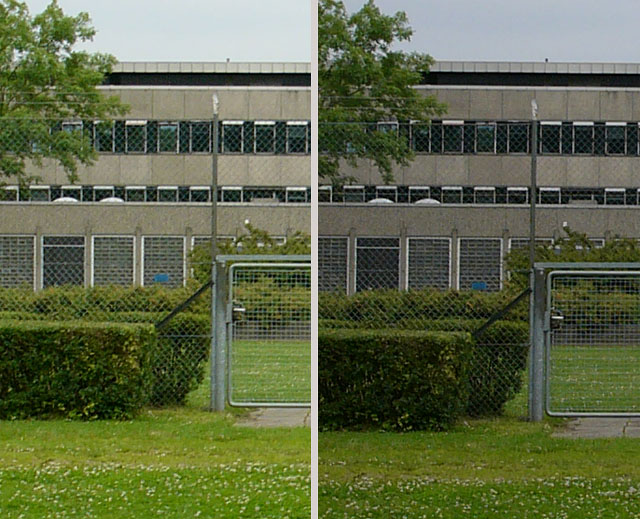
Camera A (left) and Camera B (right), both on Auto white balance, both on 100 ISO, manual 1/1000 exposure, but by my mistake, camera A was set to f/3.2 and camera B to f/3.6 (hence the difference).
But what this 100% crop does show is that sharpness and detail is the same.
Here's the full files. The depressing view is the locak mental insitution which I needed a picture of anyways for an article about how 33% of children in mental institutions in Denmark are being 'cured' byt he use of enforced 'cures' and punishment.

Camera A (f/3.2)
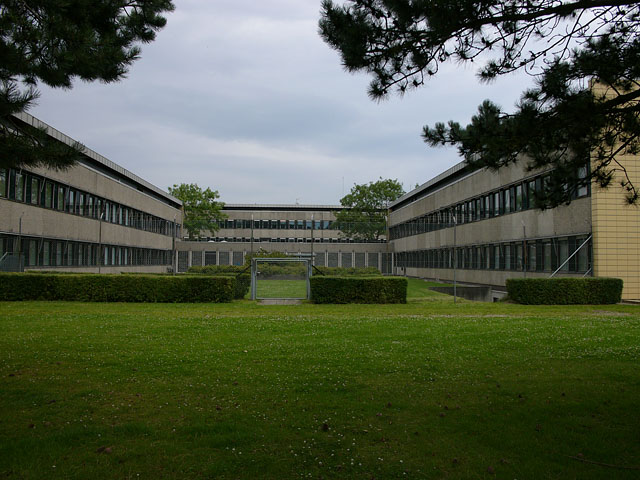
Camera B (f/3.6)
Slightly different auto-metering and auto white balance
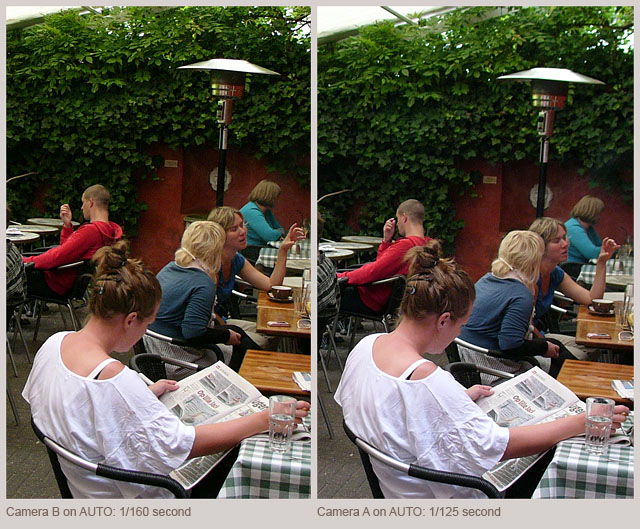
This one is with both cameras on 100 ISO and f/2.0. White balance is set to AUTO and you can see they decided to do it a bit differently. The focus is a bit off on Camera A (the heater in the background while the newspaper in the foreground is ok on both (?) which could be for many reasons; I looked through Camera B on this one and just trusted Camera A to be all right), but the most curious thing is that Camera A decided on a 1/125 exposure while Camera B is a 1/160 exposure. Here's the uncropped versions:

Camera A

Camera B
Tungsten difference
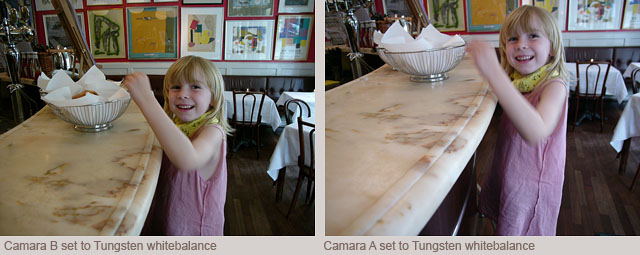
Here's one on f/2.0 100 ISO wher it's auto exposure, but the whitebalance is set to tungsten. Apart from the difference in whitebalance result, Camera B did a 1/25 exposure whereas Camera did a 1/40 exposure.

Conclusion
I think the experience which can be drawn from this experiment is that it's key to know your camera and keep your focus on the camera you are using. I had plenty to do checking that both cameras was set to the same, and yet I fumbled with them and came to change setting without noticing. For me, that confirms what I already 'knew' - that one camera is better than two. Every time I use two cameras (which is then often a Digilux 2 and a R9/DMR), I tend to forget which is on 200 ISO and which is 100 ISO, forget to change white balance on one of them, can't make up my mind which is best for the shot, etc.)
Also, my two Digilux 2 cameras has different color and light intensity in the EVF (the didigtal viewfinder; one is darker than the other and warmer in colors) why the great advantage of being able to judge the exposure of mainly highlight and shadows in preview is not worth much if you can't remember if it's the 'lig or the dark' camera you're looking through.
I normally use Camera B and have Camera A as backup. But I also did this test to find out if one was better than the other; if I should change backup camera to main camera, or keep using the same. Because back in the time it was different (at least I think); that Camera A was the 'magic camera' and Camera B was the backup. But frankly, I'm confused about which is which and will decide which will be "the magic one" based on this experience.
But what I do know, and which this experiment confirmed is, that no matter which camera you use, learn it cold, tweak it towards the exact look you want. And don't change horses in the middle of the race ;-)
Your camera's operation tend to lie in the backbone. How soft the zoom is, which controls to check over and over again as they tend to change (AF/MF, shutter for example). On the R9/R8 cameras, the program dial is locked on the R9 but not on the R8, why, when using an R8, you learn always to keep checking the program dial. It's just a backbone thing, you don't even notice thaty you check it.
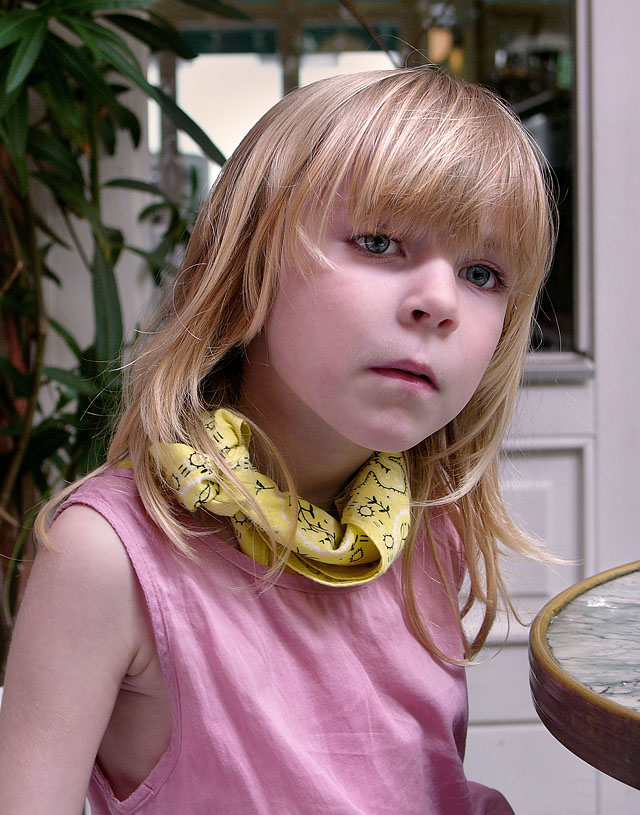
In any case, the Digilux 2 is a miracle camera. Here's one of the files from this test-tour taht I've finished. And just to prove my point, I won't tell which of the cameas it was made with.
And Here's another fun thing to do if you don't have anything else to do with your Leica Digilux 2 or special edition white Leica M8
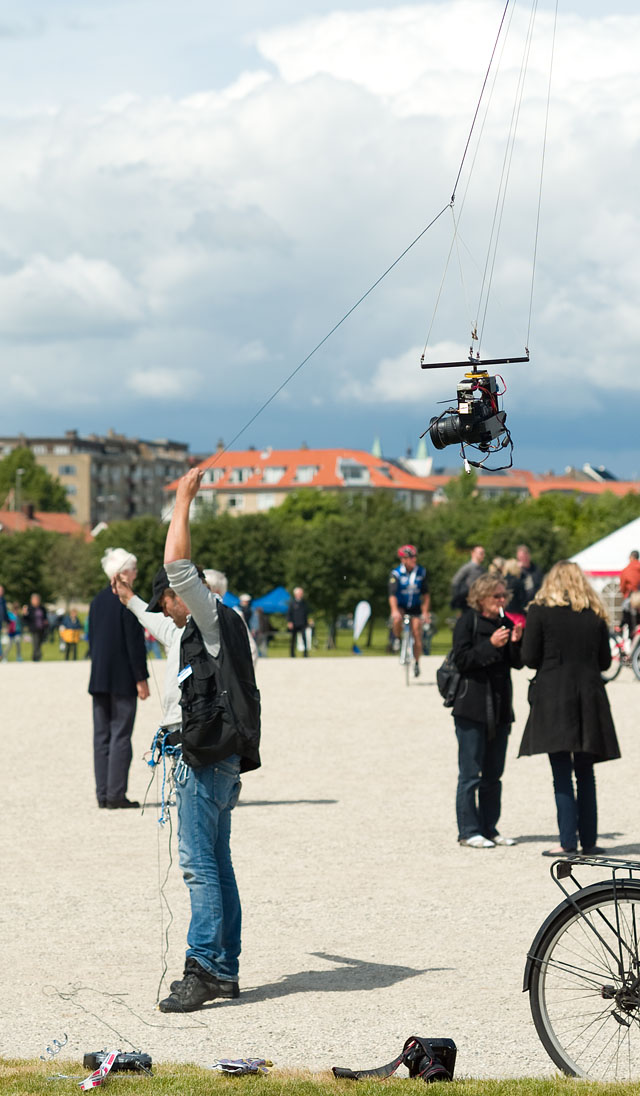
I saw this interesting setup in the summer of 2009. It's a camera elevated with a kite and I guess exposure is handled with a remote control. What he was shooting was a public event with 3-4,000 audiences, by the sea and in sunshine with nice sailboats on the ocean as well. So it's probably a great picture he got, if it worked as planned. It's not a bad idea, actually, except I might prefer a baloon or something you could easilier control in any weather. Only other possibility to get a camera that high would be a tall building or a crane.
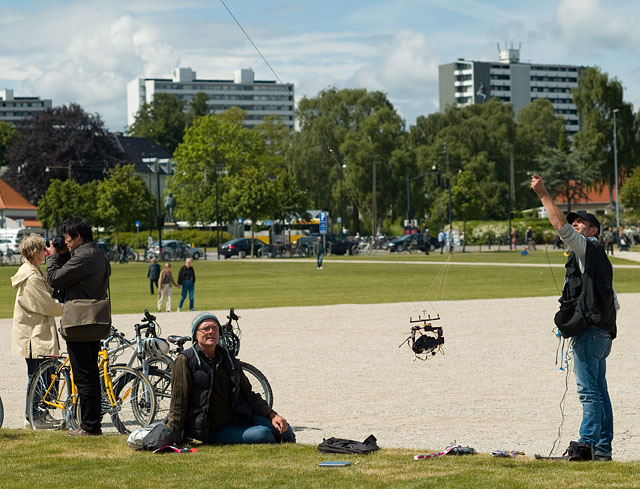
Here's another shot where you can see the set-up he uses is quite complicated. I don't know why there's all those wires and cables.
|
![]()
